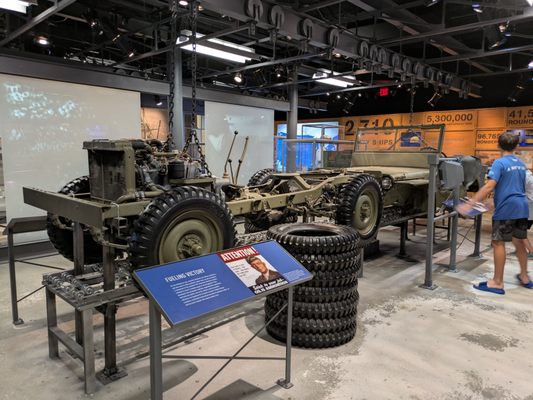The National WWII Museum
World-class museum detailing the story of the war that changed the world
World-class museum detailing the story of the war that changed the world



























945 Magazine St, New Orleans, LA 70130 Get directions

"The National WWII Museum is presented as a destination where visitors can spend a whole day in contemplation, offering a profound museum experience in New Orleans." - CNT Editors

"The National WWII Museum is a world-class history museum—a sprawling complex of modern buildings in the Warehouse District that receives thousands of visitors every day who want to hear "the story of the war that changed the world." Doing so is no easy task, but through large narrative exhibits that include detailed, personal accounts from eyewitnesses, the museum manages to do just that. Every conceivable medium is used: film, immersive exhibits, large-scale reconstructions, and first-person oral histories among them. Expect to walk—a lot—given how spread out exhibits are, but the museum is sensitive to the relatively mature age of its visitors and rest stops and benches are plentiful. A short visit isn't ideal given the scale of the topic at hand, but if you’re really pushed, you could tailor your visit to just see a specific interest, or go straight for the movie presentation." - Paul Oswell


"A culturally rich city known for its music, food, and vibrant atmosphere."

"A museum that tells the global story of World War II—fought by more than 50 countries—through immersive exhibits designed to educate visitors about the conflict's significance and to ensure future generations understand the cost of freedom." - Evie Carrick Evie Carrick Evie Carrick is a writer and editor who’s lived in five countries and visited well over 50. She now splits her time between Colorado and Paris, ensuring she doesn't have to live without skiing or L'As du Fallafel. Travel + Leisure Editorial Guidelines

"This museum hosts the Taste of the NFL on Saturday, February 8 from 4 to 7 p.m., a high-profile, ticketed charity event featuring food from 25 chefs (local and beyond), NFL stars, live entertainment, and celebrity hosts such as Andrew Zimmern, Carla Hall, and Tim Love — tickets are $750 and benefit GENYOUth’s End Student Hunger Fund." - Clair Lorell